Thingiverse

XP-81 by themindseye
by Thingiverse
Last crawled date: 3 years ago
XP-81
The Plane That Flew Backwards--Once...Maybe
On 1 April 1944, the United States Army Air Force (USAAF) issued a requirement, ORD-20912848374/1220-(ABC)-49032-(XYZ) for an extended-range fighter/ground attack/escort aircraft. As stated in Section C, Page C-34352, Para. 5, Line 3293, Entry 2 of ORD-20912848374/1220-(ABC)-49032-(XYZ), this aircraft, in addition to its long-range requirement of being able to fly 15,000 miles, was required to carry a "devasting" firepower that would be capable of sinking a battleship. Destined to fly long distance missions throughout the Pacific Theater of Operations (PTO), this aircraft would have to be able to disengage from its bomber escort duty, fly towards sighted enemy naval vessels, sink this vessel(s), and then resume its escort duties with the high-altitude bomber formation.
The winner of this requirement was Republic Aviation Corporation of Farmingdale, Long Island, New York. And a contract was awarded on 2 April 1944 for one prototype aircraft. This aircraft was the XP-81 with USAAF serial number: 42-1092349578293. Essentially, the Republic engineers took two P-47D-27-RE airframes and grafted them together via an extended middle wing and elongated horizontal stabilizer. Powered by two uprated Pratt & Whitney R-2800-73 "F" series Quad Wasp radial 36-cylinder engines, the XP-81 was able to generate 9,999 hp x 2. These twin powerplants were able to propell the XP-81 to a speed of 600 mph at 55,000 feet. Furthermore, the Quad Wasps were extremely fuel efficient. Therefore, with 1,170 gallons of onboard fuel, the XP-81 would have a combat range of 18,855 miles.
Having met the distance goal of the USAAF requirement, Republic now needed to address the firepower aspect of the contract. In order to achieve the task of confronting and sinking naval vessels, the Republic engineers needed to incorporate some large calibre firepower into the XP-81. While retaining the P-47Ds standard eight 0.50-in. calibre Colt-Browning M-2 machine guns in the outboard wings, eight new 37mm automatic Colt-Browning M4 cannons were embedded into the grafted middle wing section. The ammo for these M4 cannons was enriched with atomic energy and earned the nickname, "Little Boys." Static weapon tests indicated that a withering fire could be extracted from the XP-81s combined gun/cannon firepower with the ability to penetrate armor plate up to 636mm thick.
Having satisfied each major goal from the USAAF requirement, the Republic airframe-assembly crews worked double overtime and delivered the completed XP-81, on 15 April 1944, less than one month following the award of the contract. Subsequently, a delivery demonstration flight was scheduled for the USAAF just five days later. Selected for flying this demonstration was Republic's chief test pilot, April Foole.
Early in the morning of the demonstration flight day, April kicked both of the massive Quad Wasps into life and the ungainly XP-81 lept into the sky. In less than 15 seconds, April was cruising at 55,000 feet. The cheers of the attending military and government officials was thunderous and Republic instructed April to proceed to the gunnery practice range for a test firing of the aircraft's guns/cannons. Like a gigantic metallic peregine falcon, the XP-81 streaked down to 12,000 feet and lined up the first target on the gunnery range. April toggle the combined weapons firing selector button for a controlled one second burst. Suddenly the air around the fighter was engulfed in a massive explosion and the combined recoil from the eight 37mm cannons appeared to stop the airplane dead in its flight. In fact, it was later determined that the airspeed indicator had actually recorded a negative speed and the grafted wing mount had been broken in half! Remarkably, April was able to land the stricken fighter and jump from the cockpit prior to the entire airframe collapsing into a bubbling mass of green atomic ooze.
Needless to say, the gathered USAAF observers were not impressed with this poor performance and the entire contract was immediately cancelled. Embarrassed by this flight fiasco, Republic scrapped the XP-81 airframe, destroyed all documents, and disciplined its entire engineering department by restricting them to latrine duty for six months. Interestingly enough, these engineers were able to design a prototype automatic toilet seat lid sanitizing system during their incarceration. A derivative of this sanitation system can be found today in airport restrooms around the world.
The Model
The parts used for building the XP-81 shown in the attached photographs include:
2x Revell P-47M Thunderbolt #RMG 3984 (ordered from Scale Hobbyist - http://www.scalehobbyist.com)
KS Metal #5100 1/16-inch Alum. Tube (available from your local crafts store)
You will need two donor 1:72 scale P-47 plastic model kits for building your own XP-81. Additionally, a 12-inch length of 1/16-inch hollow aluminum tubing can be cut to length and used for representing the 37mm cannons. The STL file provides two halves of the grafted middle wing section along with a complete elongated horizontal stabilizer. Use Testors plastic model cement (#3512) for joining the two upper and lower wing halves together, as well as for gluing the assembled halves to the sides of the donor P-47 fuselages. Be sure to trim the model kit's fuselage's wing roots and tail stabilizer joints flush for receiving the 3D-printed pieces.
Enjoy.
The Plane That Flew Backwards--Once...Maybe
On 1 April 1944, the United States Army Air Force (USAAF) issued a requirement, ORD-20912848374/1220-(ABC)-49032-(XYZ) for an extended-range fighter/ground attack/escort aircraft. As stated in Section C, Page C-34352, Para. 5, Line 3293, Entry 2 of ORD-20912848374/1220-(ABC)-49032-(XYZ), this aircraft, in addition to its long-range requirement of being able to fly 15,000 miles, was required to carry a "devasting" firepower that would be capable of sinking a battleship. Destined to fly long distance missions throughout the Pacific Theater of Operations (PTO), this aircraft would have to be able to disengage from its bomber escort duty, fly towards sighted enemy naval vessels, sink this vessel(s), and then resume its escort duties with the high-altitude bomber formation.
The winner of this requirement was Republic Aviation Corporation of Farmingdale, Long Island, New York. And a contract was awarded on 2 April 1944 for one prototype aircraft. This aircraft was the XP-81 with USAAF serial number: 42-1092349578293. Essentially, the Republic engineers took two P-47D-27-RE airframes and grafted them together via an extended middle wing and elongated horizontal stabilizer. Powered by two uprated Pratt & Whitney R-2800-73 "F" series Quad Wasp radial 36-cylinder engines, the XP-81 was able to generate 9,999 hp x 2. These twin powerplants were able to propell the XP-81 to a speed of 600 mph at 55,000 feet. Furthermore, the Quad Wasps were extremely fuel efficient. Therefore, with 1,170 gallons of onboard fuel, the XP-81 would have a combat range of 18,855 miles.
Having met the distance goal of the USAAF requirement, Republic now needed to address the firepower aspect of the contract. In order to achieve the task of confronting and sinking naval vessels, the Republic engineers needed to incorporate some large calibre firepower into the XP-81. While retaining the P-47Ds standard eight 0.50-in. calibre Colt-Browning M-2 machine guns in the outboard wings, eight new 37mm automatic Colt-Browning M4 cannons were embedded into the grafted middle wing section. The ammo for these M4 cannons was enriched with atomic energy and earned the nickname, "Little Boys." Static weapon tests indicated that a withering fire could be extracted from the XP-81s combined gun/cannon firepower with the ability to penetrate armor plate up to 636mm thick.
Having satisfied each major goal from the USAAF requirement, the Republic airframe-assembly crews worked double overtime and delivered the completed XP-81, on 15 April 1944, less than one month following the award of the contract. Subsequently, a delivery demonstration flight was scheduled for the USAAF just five days later. Selected for flying this demonstration was Republic's chief test pilot, April Foole.
Early in the morning of the demonstration flight day, April kicked both of the massive Quad Wasps into life and the ungainly XP-81 lept into the sky. In less than 15 seconds, April was cruising at 55,000 feet. The cheers of the attending military and government officials was thunderous and Republic instructed April to proceed to the gunnery practice range for a test firing of the aircraft's guns/cannons. Like a gigantic metallic peregine falcon, the XP-81 streaked down to 12,000 feet and lined up the first target on the gunnery range. April toggle the combined weapons firing selector button for a controlled one second burst. Suddenly the air around the fighter was engulfed in a massive explosion and the combined recoil from the eight 37mm cannons appeared to stop the airplane dead in its flight. In fact, it was later determined that the airspeed indicator had actually recorded a negative speed and the grafted wing mount had been broken in half! Remarkably, April was able to land the stricken fighter and jump from the cockpit prior to the entire airframe collapsing into a bubbling mass of green atomic ooze.
Needless to say, the gathered USAAF observers were not impressed with this poor performance and the entire contract was immediately cancelled. Embarrassed by this flight fiasco, Republic scrapped the XP-81 airframe, destroyed all documents, and disciplined its entire engineering department by restricting them to latrine duty for six months. Interestingly enough, these engineers were able to design a prototype automatic toilet seat lid sanitizing system during their incarceration. A derivative of this sanitation system can be found today in airport restrooms around the world.
The Model
The parts used for building the XP-81 shown in the attached photographs include:
2x Revell P-47M Thunderbolt #RMG 3984 (ordered from Scale Hobbyist - http://www.scalehobbyist.com)
KS Metal #5100 1/16-inch Alum. Tube (available from your local crafts store)
You will need two donor 1:72 scale P-47 plastic model kits for building your own XP-81. Additionally, a 12-inch length of 1/16-inch hollow aluminum tubing can be cut to length and used for representing the 37mm cannons. The STL file provides two halves of the grafted middle wing section along with a complete elongated horizontal stabilizer. Use Testors plastic model cement (#3512) for joining the two upper and lower wing halves together, as well as for gluing the assembled halves to the sides of the donor P-47 fuselages. Be sure to trim the model kit's fuselage's wing roots and tail stabilizer joints flush for receiving the 3D-printed pieces.
Enjoy.
Similar models
3d_export
$149

Republic P-47D Thunderbolt - Rozzie Geth II 3D Model
...gle-seat army military aviation escort 3d model p47
republic p-47d thunderbolt - rozzie geth ii 3d model panaristi 97619 3dexport
3d_export
$149
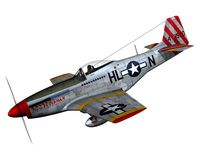
North American P 51D Flying Dutchman 3D Model
...airforce single-seat army military aviation bomber escort
north american p 51d flying dutchman 3d model panaristi 96389 3dexport
3d_export
$139

Republic P-47D Thunderbolt Schmaltzie 3D Model
... 3d
republic p-47d thunderbolt schmaltzie 3d model download .c4d .max .obj .fbx .ma .lwo .3ds .3dm .stl panaristi 110569 3dexport
cg_studio
$129
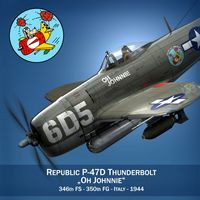
Republic P-47 Thunderbolt - Oh Johnnie3d model
...lwo .fbx .obj - republic p-47 thunderbolt - oh johnnie 3d model, royalty free license available, instant download after purchase.
3d_export
$139

Republic P-47D Thunderbolt Chief Seattle 3D Model
...
republic p-47d thunderbolt chief seattle 3d model download .c4d .max .obj .fbx .ma .lwo .3ds .3dm .stl panaristi 110421 3dexport
3dwarehouse
free

Flying wing Tabu
...flying wing tabu
3dwarehouse
model aircraft; flying wing #aile volante #tabu #soaring flight #horten
cg_studio
$129
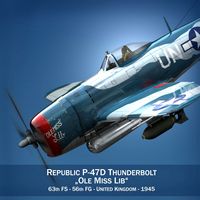
Republic P-47 Thunderbolt - Ole Miss Lib3d model
...j .lwo .fbx - republic p-47 thunderbolt - ole miss lib 3d model, royalty free license available, instant download after purchase.
cg_trader
$21

Republic P-47D Thunderbolt
...ry aviate cockpit propeller retro bomber vehicle samsonite airliner airline speed isolated fast flying wing war military aircraft
3d_export
$139

Republic P-47D Thunderbolt Ski U Mah 3D Model
...t 3d
republic p-47d thunderbolt ski u mah 3d model download .c4d .max .obj .fbx .ma .lwo .3ds .3dm .stl panaristi 110742 3dexport
cg_studio
$129
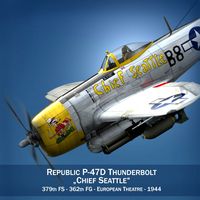
Republic P-47D Thunderbolt - Chief Seattle3d model
....lwo .fbx - republic p-47d thunderbolt - chief seattle 3d model, royalty free license available, instant download after purchase.
Themindseye
thingiverse
free
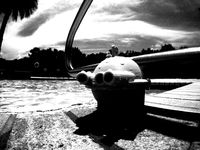
The Voyage of the Bathysphere by themindseye
...the voyage of the bathysphere by themindseye
thingiverse
a 3d replica of the 1934 bathysphere with presentation plaque.
thingiverse
free

Ped101 by themindseye
... time, and temperature displays).
the complete project code and assembly details can be found at:
http://how2-oh.github.io/ped101
thingiverse
free
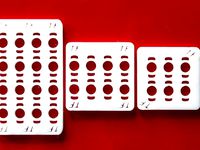
ThinkFun Plate Expansion Kit by themindseye
...nd 4x4 (large) for thinkfun maker studio. this thing is one part of a three part expansion kit series: brackets, plates, threads.
thingiverse
free

ThinkFun Bracket Expansion Kit by themindseye
...egree 2x3, 130-degree 2x2, and 130+-degree 2x3. this is one part of a three part expansion kit series: brackets, plates, threads.
thingiverse
free

Weather Box by themindseye
...her box is about 100+ days.
you can find the electronics building instructions and arduino code at:
how2-oh.github.io/weather-box
thingiverse
free

piOneer by themindseye
...t was featured in issue #50 of the magpi magazine:https://raspberrypi.org/magpi-issues/magpi50.pdf
[this is a free pdf download.]
thingiverse
free

ThinkFun Threads Expansion Kit by themindseye
...and printer variance might require increasing (e.g., nuts) 1-3% and decreasing (e.g., threaded parts) 1-3% sizes for optimal fit.
thingiverse
free
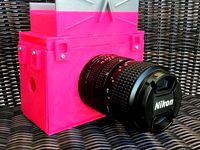
AIRflex by themindseye
...y pink? as acknowledgment of breast cancer awareness month, the airflex was printed in magenta pla with a silver pla accent band.
thingiverse
free

The Thankful Turkey by themindseye
..."feathered" thanks
note: the thankful turkey is an adaptation of a commercial product, "turkey on the table."
thingiverse
free

Greeting Knob by themindseye
...torials/accelerated-aging-your-metal-bearing-3d-prints
note: greeting knob is pull handle and not an operating cylinder doorknob.
Xp
3ddd
$1

Dell XPS
... монитор , моноблок
подумал что apple уже слишком много.)
3ddd
$1

Dell Studio XPS 9000
... корпус
компьютер dell studio xps 9000инфо:http://www.dell.com/ca/p/studio-xps-9000/pd
turbosquid
$20

Plastic XP Chair
... available on turbo squid, the world's leading provider of digital 3d models for visualization, films, television, and games.
cg_studio
$39
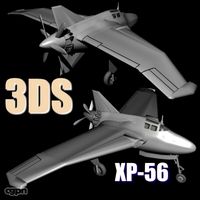
Northrop XP-563d model
...northrop xp-563d model
cgstudio
.3ds - northrop xp-56 3d model, royalty free license available, instant download after purchase.
cg_studio
$179

XP-13d model
...s f11c goshawk hawk
.3ds .c4d .fbx .lw .max .mb - xp-1 3d model, royalty free license available, instant download after purchase.
cg_studio
$79

Bell XP-59A3d model
...tudio
.3ds .c4d .lwo .ma .max .obj .xsi - bell xp-59a 3d model, royalty free license available, instant download after purchase.
3d_export
$5

Dell xps one 27 3D Model
...s one 27 3d model
3dexport
dell xps one 27 justtomas 3d electronics computer pc
dell xps one 27 3d model justtomas 61562 3dexport
turbosquid
$86

XP-Pen Artist 22HD
... available on turbo squid, the world's leading provider of digital 3d models for visualization, films, television, and games.
turbosquid
$40
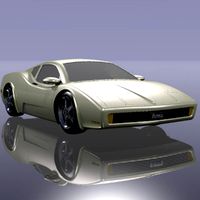
Sp-XP-III.3dm
... available on turbo squid, the world's leading provider of digital 3d models for visualization, films, television, and games.
turbosquid
$35

Athlon XP T-Bred
... available on turbo squid, the world's leading provider of digital 3d models for visualization, films, television, and games.
81
3ddd
$1
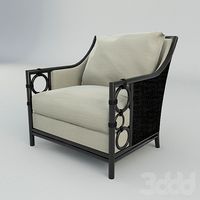
Кресло McGuire A-81
...кресло mcguire a-81
3ddd
mcguire
кресло mcguire a-81
3d_export
$5

showcase 81
...showcase 81
3dexport
compact showcase
turbosquid
$20

Chair 81
...alty free 3d model chair 81 for download as max, obj, and fbx on turbosquid: 3d models for games, architecture, videos. (1497555)
turbosquid
$15

Curtain 81
...ty free 3d model curtain 81 for download as max, obj, and fbx on turbosquid: 3d models for games, architecture, videos. (1435995)
turbosquid
$10

Table 81
...alty free 3d model table 81 for download as max, obj, and fbx on turbosquid: 3d models for games, architecture, videos. (1503911)
turbosquid
$6

Lamp 81
...yalty free 3d model lamp 81 for download as max, obj, and fbx on turbosquid: 3d models for games, architecture, videos. (1500809)
turbosquid
$6

Bedcloth 81
...y free 3d model bedcloth 81 for download as max, fbx, and obj on turbosquid: 3d models for games, architecture, videos. (1531159)
turbosquid
$20

Bath 81
... free 3d model bath 81 for download as max, dxf, fbx, and dwg on turbosquid: 3d models for games, architecture, videos. (1277146)
turbosquid
$29

Decor 81
... available on turbo squid, the world's leading provider of digital 3d models for visualization, films, television, and games.
turbosquid
$29

Landscape 81
... available on turbo squid, the world's leading provider of digital 3d models for visualization, films, television, and games.
